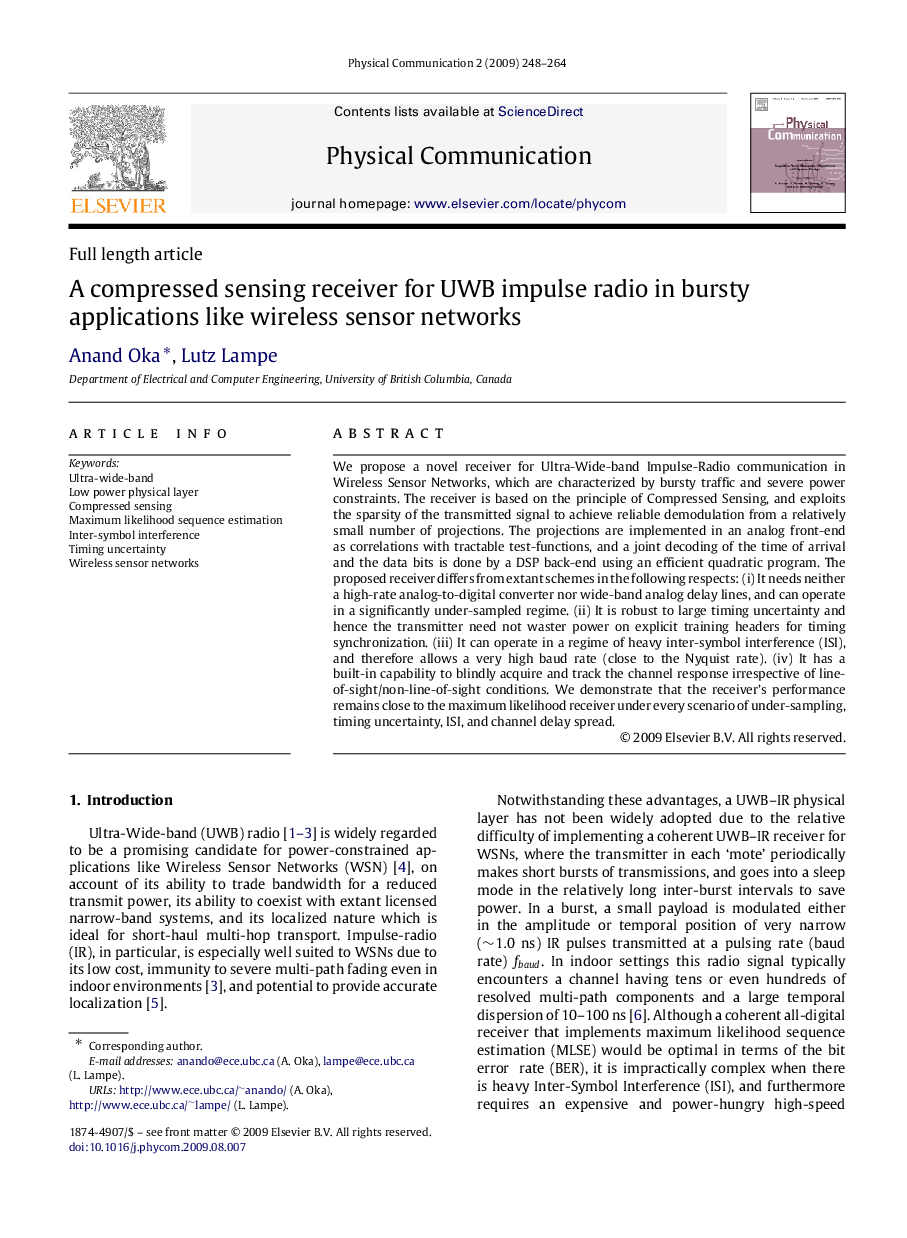| Article ID | Journal | Published Year | Pages | File Type |
|---|---|---|---|---|
| 465244 | Physical Communication | 2009 | 17 Pages |
We propose a novel receiver for Ultra-Wide-band Impulse-Radio communication in Wireless Sensor Networks, which are characterized by bursty traffic and severe power constraints. The receiver is based on the principle of Compressed Sensing, and exploits the sparsity of the transmitted signal to achieve reliable demodulation from a relatively small number of projections. The projections are implemented in an analog front-end as correlations with tractable test-functions, and a joint decoding of the time of arrival and the data bits is done by a DSP back-end using an efficient quadratic program. The proposed receiver differs from extant schemes in the following respects: (i) It needs neither a high-rate analog-to-digital converter nor wide-band analog delay lines, and can operate in a significantly under-sampled regime. (ii) It is robust to large timing uncertainty and hence the transmitter need not waster power on explicit training headers for timing synchronization. (iii) It can operate in a regime of heavy inter-symbol interference (ISI), and therefore allows a very high baud rate (close to the Nyquist rate). (iv) It has a built-in capability to blindly acquire and track the channel response irrespective of line-of-sight/non-line-of-sight conditions. We demonstrate that the receiver’s performance remains close to the maximum likelihood receiver under every scenario of under-sampling, timing uncertainty, ISI, and channel delay spread.
